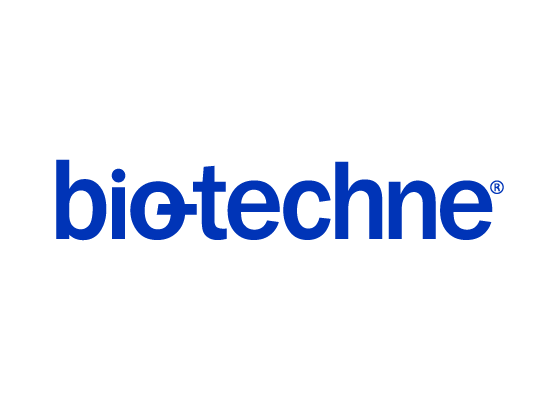Mouse TNF RII/TNFRSF1B Antibody
R&D Systems, part of Bio-Techne | Catalog # MAB4263

Key Product Details
Species Reactivity
Applications
Label
Antibody Source
Product Specifications
Immunogen
Val23-Gly258
Accession # Q545P4
Specificity
Clonality
Host
Isotype
Applications for Mouse TNF RII/TNFRSF1B Antibody
ELISA
This antibody functions as an ELISA capture antibody when paired with Goat Anti-Mouse TNF RII/TNFRSF1B Antigen Affinity-purified Polyclonal Antibody (Catalog # AF-426-PB).
This product is intended for assay development on various assay platforms requiring antibody pairs. We recommend the Mouse sTNF RII/TNFRSF1B DuoSet ELISA Kit (Catalog # DY426) for convenient development of a sandwich ELISA or the Mouse/Rat TNF RII/TNFRSF1B Quantikine ELISA Kit (Catalog # MRT20) for a complete optimized ELISA.
Formulation, Preparation, and Storage
Purification
Reconstitution
Formulation
Shipping
Stability & Storage
- 12 months from date of receipt, -20 to -70 °C as supplied.
- 1 month, 2 to 8 °C under sterile conditions after reconstitution.
- 6 months, -20 to -70 °C under sterile conditions after reconstitution.
Background: TNF RII/TNFRSF1B
Tumor Necrosis Factor Receptor II (TNF RII), also known as TNFRSF1B, p75/p80, and CD120b, is a type I transmembrane protein that belongs to the TNF receptor superfamily. It has a molecular weight of approximately 75 kDa (1-4). The TNF receptor superfamily is comprised of structurally related receptors that bind to TNF-related ligands and regulate numerous processes such as immune cell activation and apoptosis. Receptors in this superfamily are characterized by the presence of a cysteine-rich region in their extracellular domain (ECD) (1-3, 5). Mouse TNF RII contains four cysteine-rich repeats in its ECD, which shares 58% and 84% amino acid sequence identity with the human and rat orthologs, respectively. Several receptors in the TNF superfamily also contain intracellular death domains (DDs) that recruit caspase-interacting proteins to initiate apoptosis upon ligand binding. Those receptors that lack DDs, like TNF RII, bind TNF Receptor-associated Factors, which transduce signals generated by activation of these receptors (6, 7).
TNF RII is expressed predominantly on cells of the hematopoietic lineage, such as T and natural killer cells, as well as on endothelial cells, microglia, astrocytes, neurons, oligodendrocytes, cardiac myocytes, and thymocytes (6, 8, 9). In humans, TNF RII is also located on mesenchymal stem cells (6, 9, 10). TNF RII binds to the membrane-bound forms of TNF-alpha and Lymphotoxin-alpha /TNF-beta ; soluble TNF is thought to signal predominately through TNF RI (7, 11). TNF RII activation primarily initiates pro-inflammatory and pro-survival responses via NF kappaB-dependent signaling pathways (6, 7, 12-15). However, under certain conditions, TNF RII signaling can induce apoptosis (6). TNF RII also exists as a soluble receptor, which can be generated by proteolytic cleavage of its ECD from the cell surface or by alternative splicing (2, 16). Soluble TNF RII is believed to inhibit TNF biological activity by binding TNF thereby preventing it from activating membrane TNF receptors (17). Polymorphisms of the human TNFR2 gene, which result in increased expression of both membrane-bound and soluble TNF RII, have been associated with several autoimmune diseases including Crohn’s disease, systemic lupus erythematosus, and familial rheumatoid arthritis (6, 17).
References
- Dembic, Z. et al. (1990) Cytokine 2:231.
- Kohno, T. et al. (1990) Proc. Natl. Acad. Sci. USA 87:8331.
- Lewis, M. et al. (1991) Proc. Natl. Acad. Sci. USA 88:2830.
- Loetscher, H. et al. (1990) J. Biol. Chem. 265:20131.
- Beltinger, C.P. et al. (1996) Genomics 35:94.
- Faustman, D. and M. Davis (2010) Nat. Rev. Drug Discov. 9:482.
- Ihnatko, R. and M. Kubeš (2007) Gen. Physiol. Biophys. 26:159.
- Mason, A.T. et al. (1995) J. Leukoc. Biol. 58:249.
- Speeckaert, M.M. et al. (2012) Am. J. Nephrol. 36:261.
- Böcker, W. et al. (2008) J. Mol. Med. 86:1183.
- Pennica, D. et al. (1992) J. Biol. Chem. 267:21172.
- Mak, T.W. and W.C. Yeh (2002) Arthritis Res. 4:S243.
- Aspalter, R.M. et al. (2003) J. Leukoc. Biol. 74:572.
- Bradley, J.R. (2008) J. Pathol. 214:149.
- McCoy, M.K. and M.G. Tansey (2008) J. Neuroinflammation 5:45.
- Lainez, B. et al. (2004) Int. Immunol. 16:169.
- Sennikov, S.V. et al. (2014) Mediators Inflamm. 2014:745909.
Long Name
Alternate Names
Gene Symbol
UniProt
Additional TNF RII/TNFRSF1B Products
Product Documents for Mouse TNF RII/TNFRSF1B Antibody
Product Specific Notices for Mouse TNF RII/TNFRSF1B Antibody
For research use only
